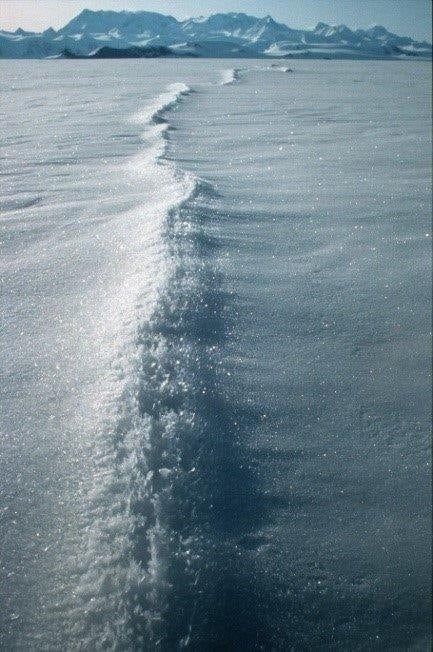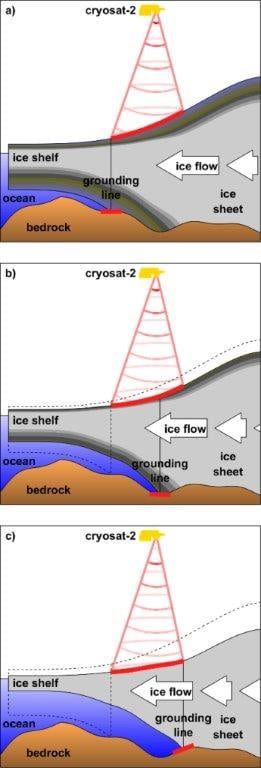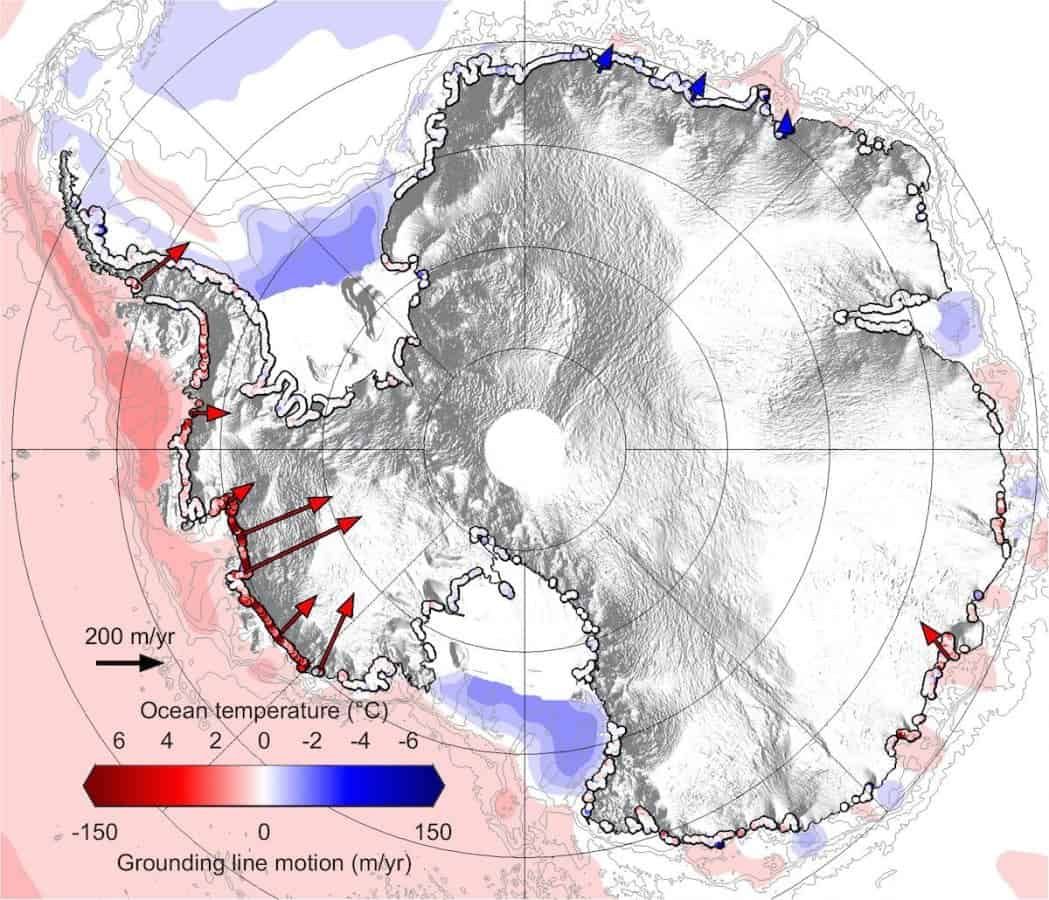Antarctica is shrinking because the sea floor is being eroded – by warm water.
Global warming is causing vast swathes of the land underneath the frozen continent to be carried away – leading to structural instability in the great ice sheet.
Now entire cliffs of ice that have stood for millions of years are breaking off and falling into the ocean, because the land they were built on has been subject to rapid erosion.
Research by the UK Centre for Polar Observation and Modelling (CPOM) at the University of Leeds has produced the first complete map of how the ice sheet’s underwater edge, or “grounding line”, is shifting.

Most Antarctic glaciers flow straight into the ocean in deep troughs, the grounding line is the place where their base leaves the sea floor and begins to float.
Their study, published today in Nature Geoscience, shows that the Southern Ocean melted 1,463 km2 of Antarctica’s underwater ice between 2010 and 2016 – an area the size of Greater London.
The team, led by Dr Hannes Konrad from the University of Leeds, found that the ground level has retreated at an extreme rate at eight of the 65 biggest glaciers – leading to around 125m of glacier length lost annually.
The pace of deglaciation since the last ice age is roughly 25 metres per year.

The retreat of the ground level at the eroded glaciers is more than five times that rate.
Biggest changes were seen in West Antarctica, where more than a fifth of the ice sheet has retreated across the sea floor.
Dr Konrad said: “Our study provides clear evidence that retreat is happening across the ice sheet due to ocean melting at its base, and not just at the few spots that have been mapped before now.
“This retreat has had a huge impact on inland glaciers, because releasing them from the sea bed removes friction, causing them to speed up and contribute to global sea level rise.”
Grounding lines typically lie a kilometre or more below sea level and are inaccessible even to submarines, so remote sensing methods for detecting them are extremely valuable.
The team were able to track the movement of Antarctica’s grounding line using European Space Agency’s CryoSat-2 across 16,000 km of the coastline.
Although CryoSat-2 is designed to measure changes in the ice sheet elevation, these can be translated into horizontal motion at the grounding line using knowledge of the glacier – which relates the thickness of floating ice to the height of its surface.

Study co-author Professor Andy Shepherd, from the School of Earth and Environment at Leeds, said: “We were delighted at how well CryoSat-2 is able to detect the motion of Antarctica’s grounding lines.
“They are impossible places to access from below, and usually invisible on the ground, so it’s a fantastic illustration of the value of satellite measurements for identifying and understanding environmental change.”
The paper was published 2 April in Nature Geoscience.
https://www.thelondoneconomic.com/news/britains-biggest-butterfly-faces-being-wiped-out-by-climate-change-say-scientists/28/03/
https://www.thelondoneconomic.com/news/environment/global-warming-is-spiralling-out-of-control/10/05/

